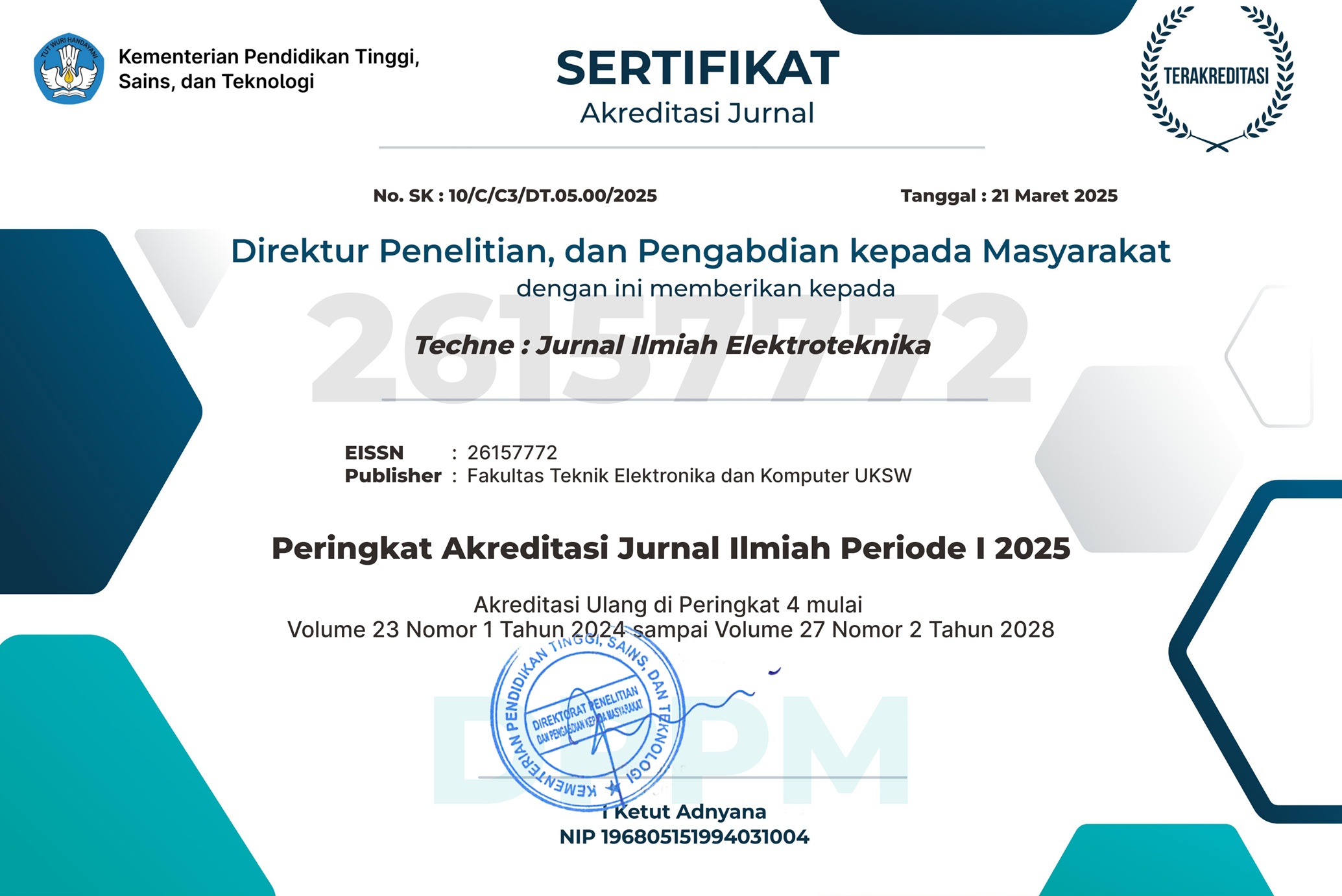Design of LTE-Wi-Fi Aggregation with Multiple Wi-Fi APs for Heterogenous Network
DOI:
https://doi.org/10.31358/techne.v21i2.333Keywords:
HetNet, LTE, WLAN, LWA, Wi-Fi AP, throughputAbstract
The growth in mobile data traffic is forcing network operators to find ways to deliver higher bandwidth, better coverage, and better quality of service (QoS) at lower development costs. One method that can be used to meet this need is the aggregation technique. Aggregation techniques that run on several different technologies are called heterogeneous networks (HetNet). Recently, some advanced technologies have been proposed to aggregate different long-term evolution (LTE) carriers or different radio access technologies (RAT) to generate higher bandwidth. Many efforts have been made to improve the throughput of heterogeneous networks. One of the factors that affects the maximum LTE-WLAN aggregation (LWA) throughput is the Wi-Fi access point (AP) signal strength. Since the power of small cells is very low, the LWA range is not very large, so the LWA range needs to be increased. This paper proposes the solution that can be implemented by using multiple Wi-Fi Aps scheme. From the experiments, it found that LWA with multiple Wi-Fi APs has better signal strength than LWA with a single Wi-Fi AP. LWA with multiple Wi-Fi APs further increase the coverage of the network.
Downloads
References
. Y.-J. Shih, “Control plane design and implementation for LTE-WLAN aggregation (LWA),” ICT Journal, 168, 2016.
. B. Ismaiel, M. Abolhasan, W. Ni, D. Smith, D. Franklin, E. Dutkiewicz, Eryk, M. Krunz, A. Jamalipour, Abbas, “PCF-based LTE Wi-Fi aggregation for coordinating and offloading the cellular traffic to D2D network,” IEEE Transactions on Vehicular Technology, 2018. Doi: 10.1109/TVT.2018.2873732.
. B. Chen, N. Pappas, Z. Chen, D. Yuan, J. Zhang, "LTE-WLAN aggregation with bursty data traffic and randomized flow splitting," ICC 2019 - 2019 IEEE International Conference on Communications (ICC), 2019, pp. 1-6. Doi: 10.1109/ICC.2019.8761723.
. Y.-B. Lin, Y.-J. Shih, P.-W. Chao, “Design and implementation of LTE RRM with switched LWA policies,” IEEE Transactions on Vehicular Technology, vol. 67, no. 2, pp. 1053-1062, 2018. Doi: 10.1109/TVT.2017.2751063.
. S. Bayhan, A. Zubow, "Enabling flexibility of traffic split function in LTE-WiFi aggregation networks through SDN," WSA 2018; 22nd International ITG Workshop on Smart Antennas, 2018, pp. 1-8.
. Y.-B. Lin, H.-C. Tseng, L.-C. Wang, L.-J. Chen, “Performance of splitting LTE-WLAN aggregation,” Mobile Networks and Applications, vol. 24, no. 2, 2019. Doi: 10.1007/s11036-018-1179-8.
. R. Bajracharya, R. Shrestha, S. Kim, “An admission control mechanism for 5G LWA,” Sustainability, vol. 10, no. 6, 2018. Doi: 10.3390/su10061999.
. Y.-K. Tu, C.-H. Lee, C.-H. Liu, C.-Y. Chia, Y.-K. Chen, Y.-B. Lin, "Deployment of the first commercial LWA service," IEEE Wireless Communications, vol. 24, no. 6, pp. 6-8, 2017. Doi: 10.1109/MWC.2017.8246817.
Downloads
Published
How to Cite
Issue
Section
License
Copyright (c) 2022 Eddy Wijanto

This work is licensed under a Creative Commons Attribution-NonCommercial-ShareAlike 4.0 International License.








